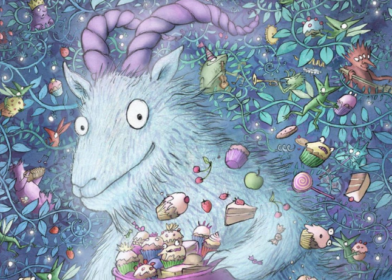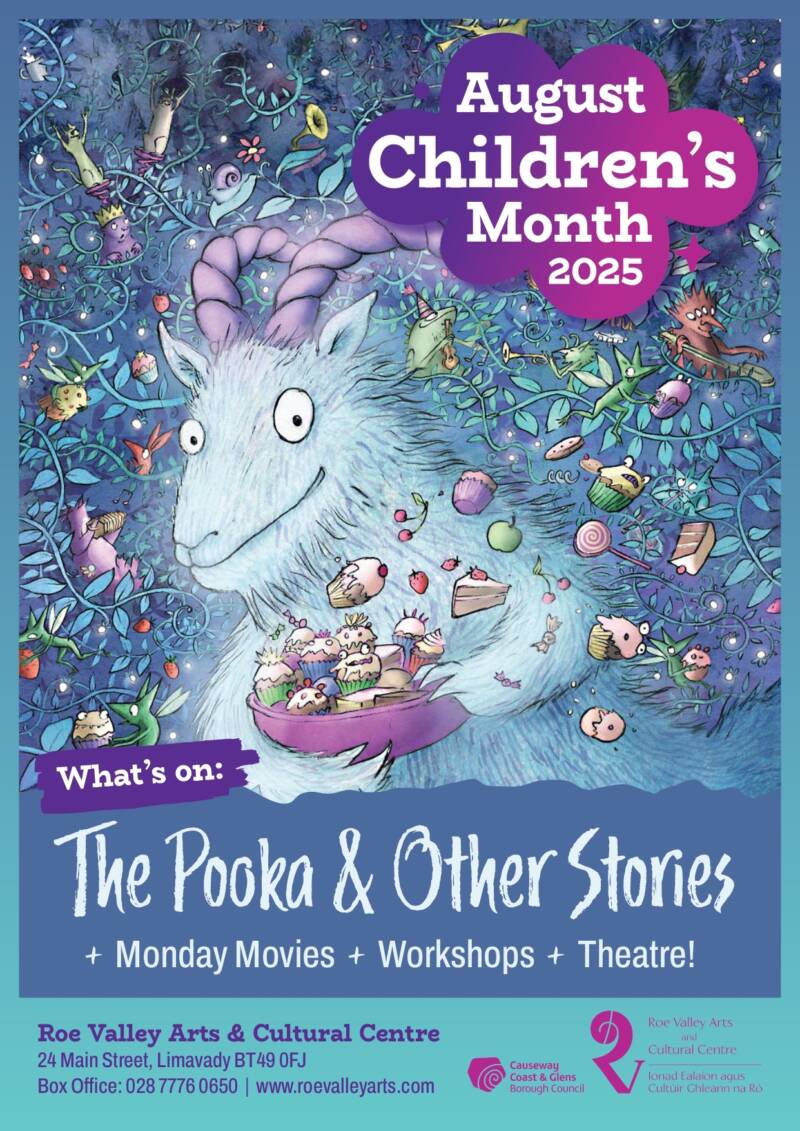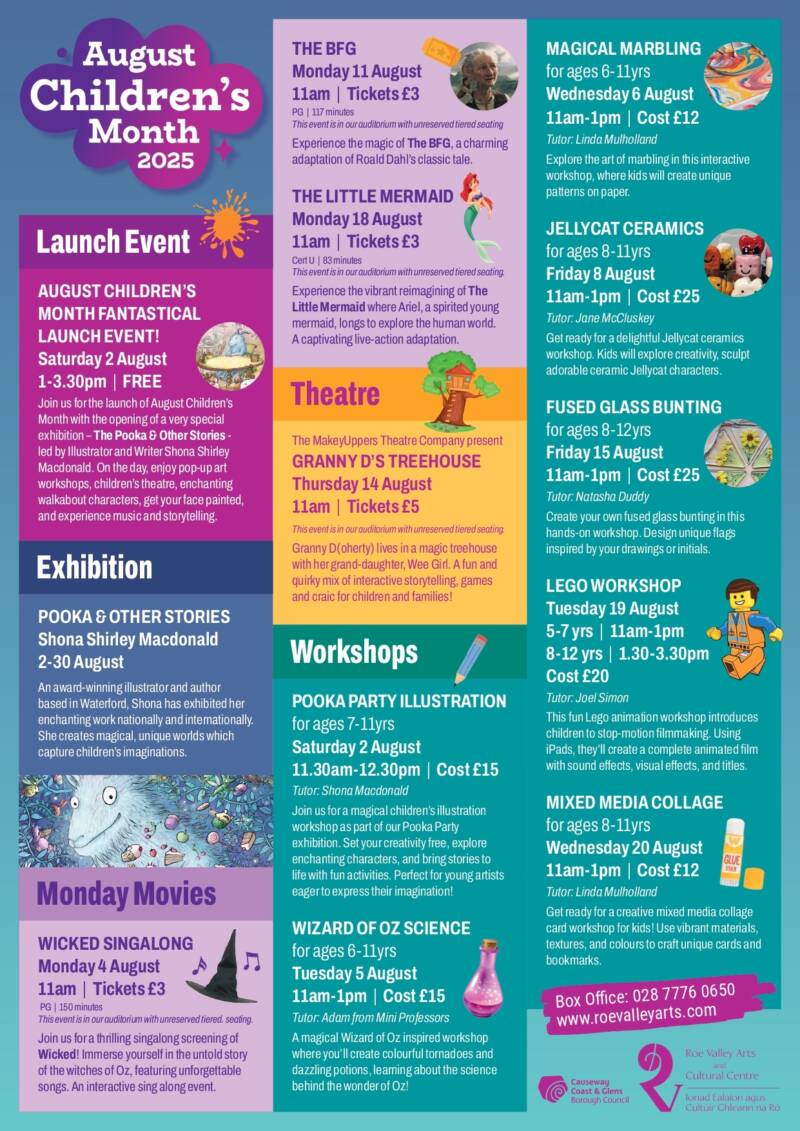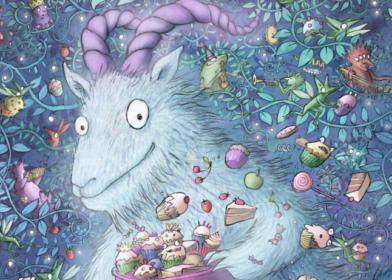August Children’s Month at Roe Valley Arts – Celebrating Creativity and Family Fun
Get ready to fill your summer with creativity and laughter at Roe Valley Arts and Cultural Centre! Our August Children’s Month is the perfect treasure trove of activities to inspire young minds through film, theatre, art, and hands-on workshops.
🎉 Family-Friendly Launch Event
Kicking off on Saturday, August 2nd from 1 PM to 3:30 PM, join us for a delightful afternoon that’s packed with pop-up art stations, fantastic live music, quirky walkabout characters, and vibrant face painting. And that’s just the start!
📚 The Pooka & Other Stories Exhibition
Dive into a world of folklore with Shona Shirley McDonald’s enchanting new exhibition, running from August 2nd to 30th. This free-spirited adventure is all about sparking wonder and imagination through beautifully intricate illustrations.
📽️ Film Screenings and Shows
Throughout the month, we’ll host an array of children’s film screenings and live performances that promise a heartwarming experience for the whole family. Expect singalongs, theatre shows, and tales that whisk you away to distant lands.
🎨 Engaging Creative Workshops
Here’s where the magic truly comes alive! From crafting dazzling fused glass art to experimenting with magical marbling techniques, our workshops are designed to fuel creativity. Children month activities at school might not hold a candle to the excitement of potion-making and storytelling theatre here!


🌟 A Peek into Weekly Activities
- Week 1: Kick things off with musical singalongs and colourful crafts.
- Week 2: Explore theatrical adventures alongside science-based workshops.
- Week 3: Dive into storytelling theatre and unique art projects.
- Week 4: Wrap up with creative potion-making and interactive sessions.
Quick Note: Secure Your Spot
Our workshops are filling fast, so we encourage early registration to secure your spot in these excellent children month activities at school worthy of praise! Visit Roe Valley Arts or call 028 7776 0650 to book.
🤝 Community Engagement and More
This Children’s Month promises to be epic! Whether you’re nurturing a budding artist or a curious scientist, Roe Valley Arts provides the perfect stage for creativity and wonder. It’s more than just a day out – it’s a journey of imagination that your family will cherish.
📞 Connect with Us
For more details and the complete schedule, visit our website or drop by the centre. Let’s create some unforgettable memories together!
Read Also
- Explore stories and more with Naga Traditions & Stories for Kids.


Join us this August, where the magic of children month activities at school meets the wonders of the Roe Valley Arts and Cultural Centre. We are thrilled to welcome you and your family!
